|
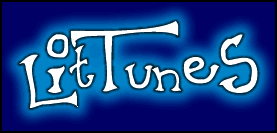

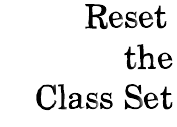
Critiquing
the Whole-Class
Novel: How the Class Set
Conspires to Produce Poor Readers.
By Christian Z. Goering
Fayetteville, Arkansas
November 3, 2008
What is it about a "class set" of novels
that captivates teachers so much that its use
dominates English language arts instruction?
— D. Fisher & G. Ivey 2007
Ivy and Fisher’s question about the “class set” is worth our full consideration. For teachers, it brings to light fundamental issues of tradition and change in the English Language Arts classroom, and begs other questions: What models do we employ to teach reading and literacy, and how closely should these efforts be aligned to the set of novels in our traditional literary canon?
Not Reading for Pleasure.
Our present challenge to train and inspire lifelong readers and writers unfolds in a time when, according to the National Endowment of the Arts,
 the number of seventeen-year-olds not reading for pleasure has doubled over the last twenty years (Gioia). We have to ask ourselves why the new crop of adolescent and young adult students doesn’t enjoy the act of reading. We have to find ways to reverse this alarming trend.
the number of seventeen-year-olds not reading for pleasure has doubled over the last twenty years (Gioia). We have to ask ourselves why the new crop of adolescent and young adult students doesn’t enjoy the act of reading. We have to find ways to reverse this alarming trend.
It seems sadomasochistic that English teachers continue to assign the same old books from a decrepit canon, that they keep fighting the good fight that their teachers fought in high school classrooms twenty-five to fifty years earlier. Moreover, many of the classroom pugilists of today came to the profession of English Teacher because they loved literature above all else, and wanted to share that love with others. It’s laudable, this love of the great work, this championing of the well-wrought novel, but how does this love translate into effective teaching?
What's Best for Kids?
A rhetorical question comes to mind again and again as I think about how to teach reading and writing and literacy: “What is best for kids?” The whole-class novel is not what’s best for kids. Rather, it is what’s best for many teachers. The term “whole-class novel” will appear time and again in this argument. It refers to those sets of fifteen to twenty copies of The Adventures of Huckleberry Finn, Madame Bovary, Lord of the Files — any one of the hundred or so titles on the high-school novel reading list — that line the bookshelves or cabinets of English classroom across the nation.
Instead of accepting the reality
that twenty-first century students need differentiated instruction when they are required to read longer works for academic purposes, many English teachers hide behind the classic response that every student needs to read ________________ or ______________. Look at the canonical list, reach for the rows of class sets on the shelves, and pick your favorite title to fill-in the blanks.
What if Practice
Doesn't Align with Theory?
By reading the great works, students are supposedly taught a common culture, purportedly introduced
 to a shared intellectual landscape in their literature studies. After all, we couldn’t have someone graduate from high school at age eighteen without having read Twain, Fitzgerald, Dickens, Austen, Melville.... Or, moving forward, without having read Achebe, Momaday, Lee, Cisneros, Angelou, Lowry.... Now could we? Cultural realities beyond one's own frame of reference are seldom, if ever, imparted to those not able to read for understanding or unwilling to engage literary text.
to a shared intellectual landscape in their literature studies. After all, we couldn’t have someone graduate from high school at age eighteen without having read Twain, Fitzgerald, Dickens, Austen, Melville.... Or, moving forward, without having read Achebe, Momaday, Lee, Cisneros, Angelou, Lowry.... Now could we? Cultural realities beyond one's own frame of reference are seldom, if ever, imparted to those not able to read for understanding or unwilling to engage literary text.
I’d prefer that every graduate, perhaps even those youngsters who drop-out before they can “walk,” would know upon leaving school how to read for content and write for understanding. For many, if not most, getting to that utilitarian level of literacy won’t be fostered by the attempt on the part of their earnest English teachers to foist upon them whole-class novels from the classroom set.
But will the classroom sets of Fitzgerald or Dickens or Twain ever vacate the dusty shelves and fade from the secondary school literature curriculum? Methinks not.
The Perspective of History
From the very formation of the discipline of English, outside forces have suggested, demanded, and mandated that certain books be taught in school. By outside, I mean any voice of authority emanating from beyond the individual English teacher’s classroom. The idea of a college preparatory reading list for high school students was born at meetings of the Committee of Ten between 1892 and 1894. The committee’s recommendations effectively allowed college English professors to mandate the curriculum for newly minted high school English classrooms (Hawisher & Soter, 1990). By 1900, the College Entrance Examination Board was dictating to high school English teachers the official, approved list of works best suited to prepare students for college (Applebee, 1974).
Opposition to official lists and outside mandates, delivered in the form of edicts from the ivory tower and directives from boards of education, arose early and often. Concerned teachers formed the National Council of Teachers of English (NCTE) in 1911, partly in opposition to curricula imposed from afar and beyond. The debate that was engaged almost one hundred years ago — what should we teach, what shouldn’t we teach, when on the student timeline should we teach this book or that book continues to this very day. But the cultural and intellectual climate of education, as well as the interests and concerns of students, are radically different things in 2008.
I can claim without fear of contradiction that, at this very moment when your eyes and mind engage my text, somewhere in America a departmental or system-wide battle is erupting over issues of the canon and how literature should be taught. Somewhere today teachers, patrons, administrators, and perhaps even students are fussing and wrangling over the suggestion that every high school junior needs to read The Adventures of Huckleberry Finn — no matter how good, or how relevant a teacher thinks the novel is for their classroom.
It's Emotional, Not Going Away.
Literature is the affective element of instruction and learning. Reading it can become an emotional experience. And when people argue about it, rational thought often falls victim to the passions of the argument. Having been privy to such discussions about why "every junior at this school should read The Adventures of Huckleberry Finn," and having seen the reddened faces, and heard the shrill voices, and witnessed the losing parties leaving the meeting room in a dramatic huff, I am certain that the whole-class novel isn't going away.
From a holistic perspective, no other academic discipline boasts teachers so entrenched in their methods and choices than does the English Language Arts.
What Is the Problem, Man?
Literacy researchers Fisher and Ivey (2007) decried the use of the whole-class novel in the pages of the Phi Delta Kappan, stating that the very idea of using one text for multiple students is antithetical to the goals of improving reading abilities and, ultimately, decreasing both aliteracy and illiteracy. "The bottom line is that, when teachers require all students
 to read the same book at the same time, English classes are neither standard-centered nor student-centered” (Fisher and Ivey, 2007).
to read the same book at the same time, English classes are neither standard-centered nor student-centered” (Fisher and Ivey, 2007).
The argument for the use of a common curriculum, i.e. whole-class selections, is compelling for the teacher-centered side of the equation, which places the teacher's best interests above the best interests of their students. Some on the other side will argue that the whole-class novel is fading from the curriculum amidst bombardment from No Child Left Behind mandates and challenges raised by Research Policy briefs emanating from the NCTE and International Reading Association. Fading maybe, but fading slowly.
The Solution?
While the problem is clear enough, the solution on a practical level lacks consensus, becoming in the transitional phase a set of emerging concepts and new methodologies. But the solution can be defined by the mission: We must provide a student-centered, learner-centered focus for reading literary works toward the shared goal of building the skills and knowledge requisite for a healthy, productive, and literate life.
 Ending the use of the whole-class novel as a standard teaching practice seems beyond the reality of the secondary English classroom. To do so would require a sharp break with tradition, a break so radical that it seems beyond the pale to most English teachers. To some, I’m sure, the idea is nothing less than heresy.
Ending the use of the whole-class novel as a standard teaching practice seems beyond the reality of the secondary English classroom. To do so would require a sharp break with tradition, a break so radical that it seems beyond the pale to most English teachers. To some, I’m sure, the idea is nothing less than heresy.
I'll Own Up to It.
Reasons do exist to keep a common curriculum, even in this time when the merits of literacy are honored far beyond those of literature. I’ll own up to my past and admit that once, back in the day, and not too long ago, I was a high school English teacher who foisted whole-class novels upon my students. I was following a pattern bequeathed to me as early as the ninth grade, when my own experience of reading Lord of the Flies brought to a screeching halt my desire to ever read again. Fortunately, I recovered by the tenth grade and was able to venture once more into the wondrous realm of reading for pleasure.
Then, returning to the ninth-grade classroom as a first-year teacher, I fell into the trap of attempting to teach A Separate Peace as a whole-class novel. I won’t enter into an argument about the literary merits of A Separate Peace or Lord of the Flies, but I will adamantly question the value of either as an appropriate work for the ninth-grade audience. My experience as both student and teacher confirms the contention of Fisher and Ivey that “it is only when readers have the ability to fully absorb the material being read that the process becomes pleasurable and a lifelong reader is created."
 Next time round, following that fateful struggle with ninth graders over the usefulness of our whole-class novel assignment, I sought alternatives to A Separate Peace. Before long, by repeating past failures and mistakes, I had created the personal illusion that “students are reading less and are less motivated, less engaged, and less likely to read in the future." Eventually I realized that no one book out there would ever be right for every one of my students.
Four Sources of Pressure
Work to Prop-up the Concept.
Why? Looking back, I wonder why I so readily agreed to the whole-class concept. I’ll attempt an answer by identifying four sources of pressure related, either directly or indirectly, to the concept of the whole-class novel: curriculum, peers, parents, and students.
 The curricula at national and state
The curricula at national and state
levels never point directly to any certain text, nor do they demand specific textual knowledge from specific books. The curricula writers are smart enough to stay out of those battles. Ultimately, national and state standards are more focused on skills than on knowledge.
The problems inherent with the class set arise at the local level, where many districts and English departments adopt reading lists and demand that their teachers adhere to them. Other schools are more subtle, but equally effective by providing shelves or closets full of classics to dictate the literature curriculum.
Here, Try this Worksheet....
For new or budding teachers, there is probably no bigger influence than the gal or guy down the hall who’s been teaching English for a while and supposedly knows the ropes. Peer pressure affects adults, too — and it’s a form of pressure that becomes influential when the demands of daily classroom management send the newbie spiraling into momentary despair, only to be rescued by an experienced and sympathetic peer teacher, who provides manila folder after manila folder stuffed with "activities," also known as no-brainer “worksheets.” What a relief, what a godsend for the harried, overwhelmed newcomer.
Then there are the concerned parents, who have a way of suggesting titles that would be ideal for their child. These helpful parents are either subtle or direct, but they were once students themselves, you know, and....
What will my child be reading this semester?
I remember I just loved Pride and Prejudice.
Have you read The Color Purple?
Don’t you think it would be a good choice?
I sure hope you don’t make them read that book!
These questions, often seemingly innocent enough, beg answers that can become all too quickly loaded with personal and incendiary issues of religion, morality, and politics. Many times, books that parents know little or nothing about rise to the status of symbol for one or another societal sin. How quickly is the flaming red flag hoisted into the air!
Students create a form of pressure
all their own. No single book interests and challenges every one of them. Mention a title, any title, and several mock scholars will automatically groan in protest. “We read that last year. It sucks!” Teachers may pick a title in the effort to motivate one student, usually a low achiever, at the risk of turning away many others who for sure won’t find the chosen novel challenging enough. “It’s boring!” shouts one. “I read that two years ago,” another whines.
The indictment of the whole-class novel is delivered with just cause when we consider these four pressures, which are sure to arise when traditional methods are injected into the teaching of literary works.
Solutions Involve New Strategies,
Including LitTunes Connections.
So, do we throw up our hands and cry, “Nothing will work! They’ll never become readers.” Or, do we roll up our sleeves and work as professionals and colleagues to develop strategies that can benefit, perhaps even inspire our students to engage this thing called “novel” when it is placed upon the desk for classroom study? I vote for the latter.
 Among several innovative
Among several innovative
approaches to teaching literacy through the study of novels, I am passionate about one in particular, the one I promote under the banner of LitTunes, the one which encourages students to make connections between the music of their life and the novels of the canon. More directly, I like to see the classroom pop with music.
Teaching with music isn't a new idea, isn’t the total cure for ills afflicting our culture of aliteracy, but it is a step in the right direction, a step towards meeting students where they are, rather than where we want them to be or where we once were.
Identity, Music, Literacy
For adolescents, music is identity. When teens burn a CD for someone else or share their digital music player with a friend, they are putting their emerging identity out there to be seen, heard, and judged. They are participating in what Shirley Brice Heath refers to as a "literacy event" (1983), sharing texts they have been reading.
Along with many other integral parts
of adolescent life — video games, YouTube, text messaging, second life, social networking — music is an effective and penetrating way of reaching into the insular realm of the student and speaking directly in their special, dynamic language. But carrying on in the current manner of instruction, the one popular with the old school, isn't acceptable
 to many of us who are singing and dancing our way through the LitTunes universe. John Dewey’s prophetic words are as true today as they were a century ago: "If we teach as we taught yesterday, we rob our children of tomorrow."
to many of us who are singing and dancing our way through the LitTunes universe. John Dewey’s prophetic words are as true today as they were a century ago: "If we teach as we taught yesterday, we rob our children of tomorrow."
Focused and Self-Selected
In practice, the whole-class novel is securely planted in nearly every field visible on the English language arts landscape. But somewhere in the distance comes a new rider. Fisher and Ivey recommend wide, focused reading as an alternative. Clearly, the novels and other literary texts we instruct our students to read should be self-selected whenever possible, centered on a central theme or concept, and attuned to diversity in level, genre, and cultural representations.
Those criteria seem logical at the secondary level, leading us away from the idea of one book for one class. They direct us to a fresh perspective of one book for one student. But traditions die hard, which presents teacher educators with a real paradox. If we enter into the seemingly fruitful task of preparing new teachers for life without the whole-class novel, are we in effect failing to prepare them for the realities of the classroom, where traditions are deeply rooted and where the whole-class set shall most surely arise to confront them?
Answer that one, why don’t you? But while we’re mulling it over, let’s carry on the search for effective ways to create lifelong readers. Let's start by trying to breathe new life into
 the archaic texts of the time-honored curriculum. One way of addressing this goal is through musical intertextuality, which allows us to direct students toward purposeful connections between literary texts new to them and musical texts known to them.
the archaic texts of the time-honored curriculum. One way of addressing this goal is through musical intertextuality, which allows us to direct students toward purposeful connections between literary texts new to them and musical texts known to them.
Drawn into the Text
Do you see another dusty demigod falling off the shelf and landing onto a familiar playing field of plot summaries, lists of characters, and Cliff Notes surface skimming? Maybe, but then again, maybe looks are deceiving.
Instead of pretending to read while they listen to tunes, students will be drawn into the written word with music on their minds. Maybe they will eagerly attempt to make one or more of the six LitTunes connections: direct, thematic, setting, character, tone, or plot. Maybe, even maybe, they will be merrily on their way to renewed interest in the proverbial sacred cow, the whole-class novel.
Like it or not, the young among us have fully entered a world multi-tasking. In the LitTunes model, students shuffle through their iPods while reading from A Separate Peace. They attempt to connect Gene and Phineas to characters and situations contained in their personal musical canon.
By tweaking the approach here and there, and by making the act of reading all about the students who are doing the reading, an opportunity emerges to bring together teacher, student, and — should a teacher be so bold — the whole-class novel in a new way, but also in a way that addresses standards and curriculum. The classroom becomes a place of respect and relevance. Instead of a canonical text appearing as a relic, worlds removed from lives of the twenty-first century student, it becomes an object of interest and novelty. Literacy is served, and well served.
As Fisher and Ivey conclude, we as teachers should "work instead on expanding students' understanding, interests, and thinking." To get there, some of us are learning the value of looking beyond old ways and peering into the future. They tell me the future is now. I say let’s find what’s best for students, even when it goes against the grain of what once worked for us.
References
 Applebee, A. N. (1974). Tradition and Reform in the Teaching of English: A History. Urbana, Il: National Council of Teachers of English.
Applebee, A. N. (1974). Tradition and Reform in the Teaching of English: A History. Urbana, Il: National Council of Teachers of English.
 Brice Heath, S. (1983). Ways with Words. Cambridge: Cambridge University Press.
Brice Heath, S. (1983). Ways with Words. Cambridge: Cambridge University Press.
 Fisher, D. & Ivey, G. (2007). Farewell to A Farewell to Arms: Deemphasizing the Whole-Class Novel. Phi Delta Kappan. Vol. 88 pp. 494-497.
Fisher, D. & Ivey, G. (2007). Farewell to A Farewell to Arms: Deemphasizing the Whole-Class Novel. Phi Delta Kappan. Vol. 88 pp. 494-497.
 Gioia, D. (2004) Reading at Risk: A Survey of Literary Reading in America. Washington, DC: National Endowment for the Arts. Retrieved October 29, 2008 from the worldwide web http://www.nea.gov/pub/ReadingAtRisk.pdf
Gioia, D. (2004) Reading at Risk: A Survey of Literary Reading in America. Washington, DC: National Endowment for the Arts. Retrieved October 29, 2008 from the worldwide web http://www.nea.gov/pub/ReadingAtRisk.pdf
 Hawisher, G. E., & Soter, A. O. (eds.) (1990). On literacy and its teaching: Issues in English education. Albany NY: State University of New York Press.
Hawisher, G. E., & Soter, A. O. (eds.) (1990). On literacy and its teaching: Issues in English education. Albany NY: State University of New York Press.
 To view this document
To view this document
as a printer friendly Adobe .pdf file,
click the icon.
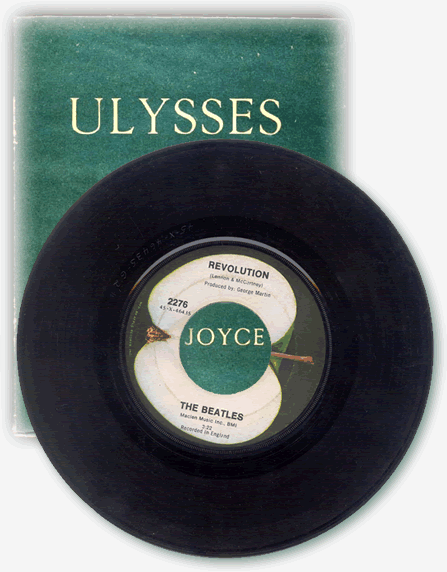
LitTunes is a part of the CornDancer family of developmental websites.
CornDancer has participated in the World Wide Web since the summer of 2000.
Submissions are invited.
Contact webmaster at threadspinner@corndancer.com
|
|
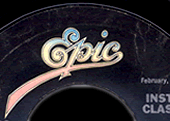

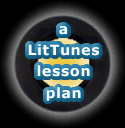




 the number of seventeen-year-olds not reading for pleasure has doubled over the last twenty years (Gioia). We have to ask ourselves why the new crop of adolescent and young adult students doesn’t enjoy the act of reading. We have to find ways to reverse this alarming trend.
the number of seventeen-year-olds not reading for pleasure has doubled over the last twenty years (Gioia). We have to ask ourselves why the new crop of adolescent and young adult students doesn’t enjoy the act of reading. We have to find ways to reverse this alarming trend. to a shared intellectual landscape in their literature studies. After all, we couldn’t have someone graduate from high school at age eighteen without having read Twain, Fitzgerald, Dickens, Austen, Melville.... Or, moving forward, without having read Achebe, Momaday, Lee, Cisneros, Angelou, Lowry.... Now could we? Cultural realities beyond one's own frame of reference are seldom, if ever, imparted to those not able to read for understanding or unwilling to engage literary text.
to a shared intellectual landscape in their literature studies. After all, we couldn’t have someone graduate from high school at age eighteen without having read Twain, Fitzgerald, Dickens, Austen, Melville.... Or, moving forward, without having read Achebe, Momaday, Lee, Cisneros, Angelou, Lowry.... Now could we? Cultural realities beyond one's own frame of reference are seldom, if ever, imparted to those not able to read for understanding or unwilling to engage literary text.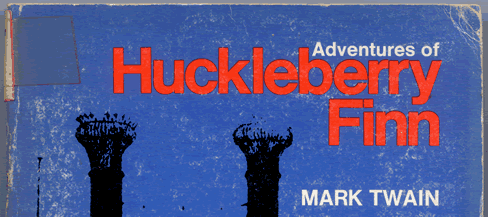
 to read the same book at the same time, English classes are neither standard-centered nor student-centered” (Fisher and Ivey, 2007).
to read the same book at the same time, English classes are neither standard-centered nor student-centered” (Fisher and Ivey, 2007). Ending the use of the whole-class
Ending the use of the whole-class
 The curricula at national and state
The curricula at national and state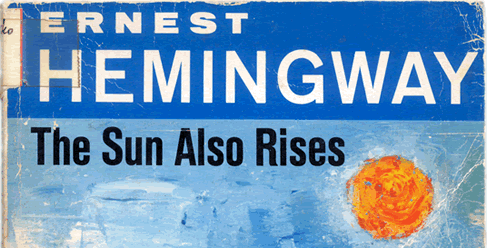

 to many of us who are singing and dancing our way through the LitTunes universe. John Dewey’s prophetic words are as true today as they were a century ago: "If we teach as we taught yesterday, we rob our children of tomorrow."
to many of us who are singing and dancing our way through the LitTunes universe. John Dewey’s prophetic words are as true today as they were a century ago: "If we teach as we taught yesterday, we rob our children of tomorrow." the archaic texts of the time-honored curriculum. One way of addressing this goal is through musical intertextuality, which allows us to direct students toward purposeful connections between literary texts new to them and musical texts known to them.
the archaic texts of the time-honored curriculum. One way of addressing this goal is through musical intertextuality, which allows us to direct students toward purposeful connections between literary texts new to them and musical texts known to them.

